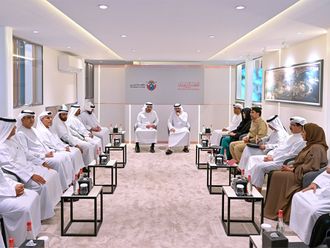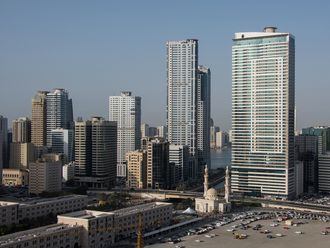Scientists have urged the need to re-examine earthquake hazards and estimate risks to the population and economy in the UAE.
Although an earthquake hazard has not been an issue in the UAE until recently, there are now at least three reasons to address the threat, they warned.
Firstly, they said the hazard in the UAE is approximately the same as that in parts of California, Turkey and Iran. Secondly, a major fault of unknown seismic activity level runs along the West Coast of the country, right through all the major cities. And thirdly, a magnitude five earthquake occur-red in Masafi area about 23 km from Fujairah on March 11, 2002.
"This shows one has to expect earthquakes of the Magnitude 6±0.5 class. If such an earthquake would happen at the same distance from Abu Dhabi, Dubai, Al Ain or Sharjah, the damage could be serious to extremely serious (more than 100 deaths, more than 1,000 injured and losses of 5-10 per cent of the value of buildings)."
This was revealed in a research conducted by Dr Azm S. Al Homoud, professor at the School of Engineering at the American University of Sharjah, in collaboration with Max Wyss-World Agency for Planetary Monitoring and Earthquake Risk Reduction in Geneva, Switzerland.
The report An Approximate Esti-mate of The Earthquake Risk in the United Arab Emirates, recommended a programme be initiated to study the hazard, estimate the risk and mitigate the possible consequences, along the lines that are common in industrialised countries.
As a first step, the preliminary loss estimates presented here should be calculated with up-to-date data on building stock.
According to the report, A major 'fault' (see graphic) defines the West Coast, running right through all the large cities there. Another fault passes through the centre of the peninsula and out to sea at Dibba. There exist other faults on the Arabian shield which are not active.
"Why should one suspect those in the UAE to be capable of earthquakes? Firstly, because a magnitude Magnitude 5 earthquake occurred on March 11, 2002 at Masafi, and secondly because it is likely that stresses are built up in the prong formed by the UAE territory that is thrust by tectonic forces into the southern coast of Iran.
"After the Masafi earthquake of Magnitude 5 (denoted by a star in the graphic) we cannot exclude the possibility of earthquakes with M6±0.5 elsewhere in the UAE.
"Although we do not know whether or not the faults shown in the graphic are active, they must be considered prime candidates for future earthquakes. The length of these faults is such that, theoretically, they could accommodate a dozen Magnitude 6.5 earthquakes, each."
The report noted southern Iran is riddled by active faults because it is a major boundary of tectonic plates. "But why should we worry about major earthquakes in the UAE at more than 100 km distance from the plate boundary? Because it is common that earthquakes of Magn-itude 7 occur at distances of up to 500 km from plate boundaries."
The international team that has mapped seismic hazard around the globe judged the hazard in the UAE as similar to that in California and parts of Turkey and Iran.
"Because this estimate is mainly based on the expected occurrence of very large earthquakes in southern Iran, it may be an overestimate. On the other hand, the effects of local earthquakes were not included".
Scientists in the report further mentioned: "We have begun to model not only the hazard posed by local earthquakes, but also the losses to be expected."
Scientists urged the need to have risk assessment in case of a disaster. The report recommended the risk be carefully assessed, using up-to-date estimates of the current number of inhabitants and the condition of the building stock.
Recommendations included:
"Extend the loss estimates to industrial facilities, such as installations for hydrocarbon extraction and lifelines; inspect buildings to identify those that are not safe and design a plan to correct existing problems.
"Conduct surveys of soil conditions in large cities to identify locations in which dangerous amplifications of strong ground motion or soil liquefaction may occur. This is because these effects have proven extremely damaging in many cases, which suffered serious losses at a distance of 300 km from an earthquake that caused only minor damage at 100 km distance.
"Establish a seismograph network with which micro-earthquakes can be located, to map seismically active areas in the UAE; and monitor the possible development of seismicity indu-ced by extraction of liquids and gases from geological layers."
Call to reassess quake risk
Scientists have urged the need to re-examine earthquake hazards and estimate risks to the population and economy in the UAE.










